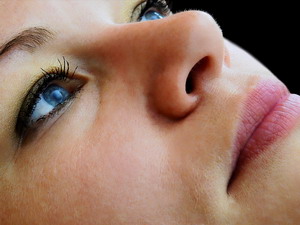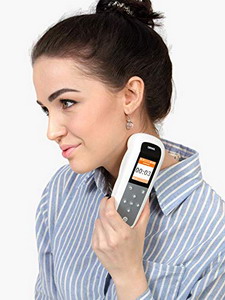
A couple of months ago I was introduced to the world of dynamic electro-neuro stimulation (DENS). This is a type of physiotherapy that has been in use in Russia since the 1980s. When it was first developed for use with the Russian space program, it was promoted as a new Star Trek healing device. It stimulates the innate healing of the body for almost any condition. Naturally, we ignored this development in this country as it does not fit our health paradigm. We are interested in ever more complex answers to increasingly smaller problems. Besides, cures are not profitable, the big money is in disease management with drugs and tech.
So what is DENS therapy? It is similar to microcurrent therapy used in high-end electric acupuncture machines. The big difference is that Russian technology uses a biofeedback technique to control the output of the device instead of the simple continuous output of the American microcurrent devices. This is a critical difference because our body quickly adapts and ignores any continuous stimulation. It is kind of like our hearing. If there is a soft buzzing noise in the background where we are trying to work, our brain quickly ignores it so we can focus on the work at hand. But if that noise is erratic in tempo and intensity, it becomes very hard to ignore. This same thing happens with the stimulation from electrical physiotherapy. The body quickly ignores it and it becomes ineffective. But the Russian technology constantly reads the body’s response to stimulation and constantly adapts to any resistance to keep the stimulation working.

As time went on the technology matured. Different frequencies were found to do different things to the body. Different ways of altering the frequency and the amplitude also produced differing results. At this point, there are over 80 studies published in peer-reviewed journals in Europe every year on this technology. Back in the 80s while this was still new, a very large-effectiveness study was performed on 18,255 patients with all kinds of conditions. We are talking circulatory diseases, digestive diseases, musculoskeletal diseases, respiratory diseases, urogenital diseases, and ear diseases. Across this whole range of diseases, the DENS produced an average cure rate of 88.5%. That is a cure, not just improvement. The exact study results can be found here:
Those are some pretty amazing numbers. Since that time the technology has only improved. In particular, the protocols for treating different conditions has expanded immensely. From what I have found so far the first machine to really get marketed here in the US was called a Scenar by a company called RITM. It is a little complicated to use. By far the more common device used in Russia is one called DENAS. It is designed for use by anybody without previous training. It has treatment protocols built-in with pictures showing the user where to treat the body. It is designed as an at-home treatment for folks to use on themselves and their kids to stay healthy.

So what does this therapy actually do? Mostly I find references to very complex physiology, but a few simple and obvious pathways of action come to the surface. First, the electricity coming from the device is designed to mimic the signals that travel along our nerves naturally – the same strength and shape. Researchers have measured the waveform from the Russian devices triggering firing in the “c” nerve fibers in the skin causing the release of neuropeptides and neuromodulators which regulate how our body responds to stress and disease. The fundamental communication between the cells and body parts is enhanced by the nerve-like impulses from the DENS devices. Actual nerve pathways appear to be involved as the effects of the device are found to travel along the nerve pathways called dermatomes. I have even read that the individual cell membranes in a diseased area use the electrical charge to increase their membrane potential, which allows the cells to push poisons out and pull nutrition into the cells for healing. Quite a bit of DENS therapy is also used on acupuncture points in a manner much more effective than typical electro-acupuncture machines. All these processes serve to help normalize physical functioning and reestablish health.

Bonus stuff I have come across related to a big conference held in San Diego a couple of months ago focusing on the cosmetic uses of DENS therapy. That’s right, DENS facelifts, wrinkle reduction, and scar softening. What more could you want from a physiotherapy – getting out of pain, relieving disease, and looking better? Are there any downsides? There are very few contraindications. It can be used on any age person, but not over a pacemaker, over cancer, for epilepsy, unknown fevers, or vein thrombosis. Typically treatments run from 15 minutes to a half an hour and are done 3 times a week for a couple of weeks to a month – 6 to 12 treatments seem to be appropriate for most conditions. Very chronic conditions might need more, while very recent conditions might see resolution with only a couple of treatments. The idea is to keep bringing the communication and self-regulation of the physiology back to normal until the body can take over on its own.
I have purchased two versions of this technology, DENAS, and RITM SCENAR. Ellen and I have been experimenting with it for the last few weeks. We have been trying it on everyone we know, and I have even tried it with a few patients. So far the results have been amazing. Either we see immediate improvement, or the symptoms will actually flare up for a few hours than feel much better. We have not had enough time or regular application to see if we get the long term results, but all indications point to this outcome.

We first learned about this therapy from one of Ellen’s clients who told us her Chiropractor had switched over to using only this therapy as her main treatment modality in her office. I have since heard of several other Chiropractors who have done the same thing. This suggests to me that this is a pretty powerful treatment method. I don’t think I could switch over as the actual application process is pretty boring, but I do think I could show patients how to treat themselves at the office and provide the equipment to do this. I am financially conservative (cheap) by nature, and I would not feel good charging $65 a session three times a week to treat people with a modality I can show them how to do on themselves at a fraction of the cost. So I am figuring out how to make this available at the office for you. Worker’s comp fund tells us to charge $19.06 for an unattended therapy like electric stimulation by itself and $13.86 when it is added to an office visit, so I could make this fly by classifying it under that heading. However since I am designing this for my cash patients, I would lower the price even more, down to $10 a session.

The question that remains is how much interest is there in this type of therapy? Would the units I have now be sufficient, or will I need to purchase more devices? This type of therapy requires more office visits than I usually prescribe for patients in order to get the long term results. How many of you are interested in doing this? I am excited about what this can do for my patients, but my excitement alone does not give folks more time in the day to take care of themselves.
Take care,
David
